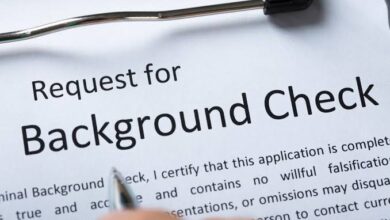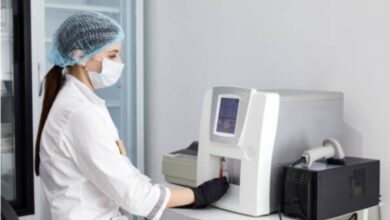Laser Cleaning in Shipbuilding

The shipbuilding industry has a new way to clean ships: laser cleaning. This method is faster, safer, and better for the environment than traditional cleaning ways. Laser cleaning is quicker, removing dirt and old coatings from ship surfaces. It’s also safer, eliminating the need for harsh chemicals and dangerous equipment. Additionally, laser cleaning is greener, producing no harmful waste or pollution. It’s like a powerful vacuum cleaner for ships! Using Laser Cleaning Technology, the industry can help ships and the planet, making it a win-win solution.
Laser Cleaning: A Precise and Gentle Way to Clean
Laser cleaning uses an intense light beam to remove dirt and grime from surfaces.
How it Works
1. The Laser Beam Shines: The laser beam is directed at the surface that needs cleaning.
2. Dirt and Grime Get Hot: The laser beam heats the dirt and grime, turning them into vapor.
3. Vapor Disappears: The vaporized dirt and grime disappear, leaving a clean surface behind.
Why It’s Good
– Precise: The laser only removes the dirt, not the surface. It’s precise and accurate.
– Gentle: The laser doesn’t hurt the surface. It’s gentle and won’t damage it.
– Effective: The surface is clean and shiny again. It’s practical and reliable.
What it’s Used For
– Shipbuilding: To clean ships and boats, removing rust and corrosion.
– Other Industries: To clean machines, tools, and equipment in various industries, such as aerospace, automotive, and construction.
Benefits of Laser Cleaning
Faster Production
– Laser cleaning is much faster than traditional cleaning methods, saving time and increasing productivity.
– It saves time by:
– Cleaning surfaces quickly and efficiently.
– Reducing the need for repeated cleaning.
– Allowing for faster project completion.
– This means:
– Ships can be built and repaired more quickly.
– Projects can be completed faster, and deadlines can be met more easily.
– Resources can be allocated more efficiently.
Reduced Accidents
– Laser cleaning is much safer than traditional methods, reducing the risk of accidents and injuries.
– It doesn’t use:
– Harsh chemicals that can harm people, the environment, and the ship’s surface.
– Dangerous equipment that can cause injuries, such as falls or electrical shocks.
– This reduces the risk of:
– Accidents, such as slips, trips, and falls.
– Injuries, such as chemical exposure or equipment malfunctions.
– Environmental damage, such as chemical spills or waste.
Increased Accuracy
– Laser cleaning is precise, only removing contaminants and leaving the surface intact.
– It only removes:
– Dirt and grime.
– Rust and corrosion.
– Old coatings and paint.
– It doesn’t damage:
– The surface underneath, preserving its integrity.
– The ship’s structure, ensuring its stability and safety.
Cost Savings
– Laser cleaning reduces costs by:
– Reducing waste and labor costs.
– Extending the life of the ship and its surfaces.
– Reducing the need for frequent cleaning and maintenance.
– This saves money by:
– Reducing the cost of cleaning supplies and equipment.
– Reducing labor costs and increasing productivity.
– Extending the ship’s life and its surfaces, reducing replacement costs.
Uses in Shipbuilding
Prepare Surfaces
– Laser cleaning prepares surfaces for painting and coating by:
– Removing dirt and grime.
– Removing old coatings and paint.
– Smoothing out the surface.
– This makes a smooth surface for:
– New coatings.
– Paint.
– Other surface treatments.
Remove Rust and Corrosion
– Laser cleaning removes rust and corrosion by:
– Vaporizing rust and corrosion.
– Removing damaged layers.
– Smoothing out the surface.
– This extends the life of the ship and keeps it in:
– Good condition.
– Top shape.
– Compliant with safety regulations.
Remove Old Coatings
– Laser cleaning removes old coatings and paint by:
– Vaporizing old coatings and paint.
– Removing damaged layers.
– Smoothing out the surface.
– This makes way for:
– New coatings.
– Fresh paint.
– Other surface treatments.
– This keeps the ship looking:
– Good.
– Protected.
– Well-maintained.
Step-by-Step Guide to Laser Cleaning
1. Check the Surface
– Look at the surface to see how dirty it is.
– Check for dirt, grime, and old coatings.
2. Choose the Right Laser
– Select a laser that’s suitable for the job.
– Make sure it’s powerful enough to clean the surface.
3. Set Up the Laser
– Follow the manufacturer’s instructions to set up the laser.
– Make sure it’s safe and secure.
4. Clean the Surface
– Use the laser to clean the surface.
– Move the laser beam slowly and steadily over the surface.
5. Check and Repeat
– Check the surface to see if it’s clean.
– If it’s still dirty, repeat the process until it’s clean.
Remember always to follow safety guidelines when using a laser cleaner!
Conclusion
Laser cleaning is a new way to clean ships. It’s better than old methods in three ways. First, laser cleaning is faster. It saves time, which means ships can be built and repaired quickly. Second, laser cleaning is safer. It doesn’t use harsh chemicals or dangerous equipment, making it a safer choice for workers. Third, laser cleaning is more accurate. It only removes dirt and old coatings without damaging the ship’s surface.
To use laser cleaning, shipbuilders should follow five simple steps. First, check the surface to see how dirty it is. Next, choose a suitable laser for the job. Then, set up the laser safely, following the manufacturer’s instructions. After that, use the laser to clean the ship’s surface. Finally, check the surface to see if it’s clean, and repeat the process if needed.
By following these steps, shipbuilders can use laser cleaning to build ships faster, keep ships and workers safe, and make ships look new. Laser cleaning is a game-changer in shipbuilding. It’s a simple, secure, and effective way to clean vessels.



